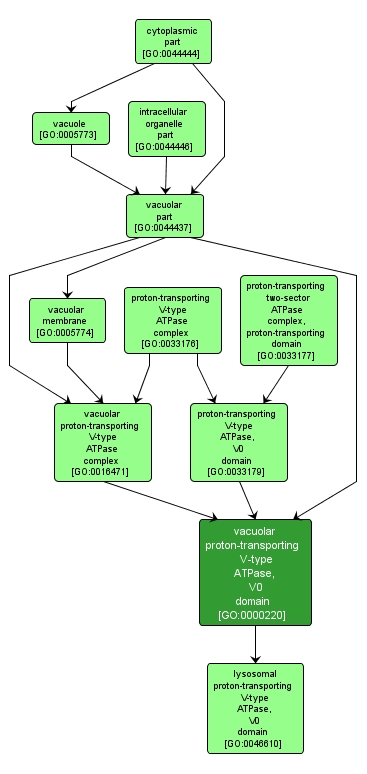GO TERM SUMMARY
|
| Name: |
vacuolar proton-transporting V-type ATPase, V0 domain |
| Acc: |
GO:0000220 |
| Aspect: |
Cellular Component |
| Desc: |
The V0 domain of a proton-transporting V-type ATPase found in the vacuolar membrane. |
Synonyms:
- vacuolar hydrogen ion-transporting ATPase V0 domain
|
|

|
INTERACTIVE GO GRAPH
|














